Mina: The Heartbeat of Faith During Hajj
Nestled in the heart of the sacred lands of Mecca, Mina stands as a beacon of faith and devotion during the Hajj pilgrimage. It is more than just a geographical location; it is a sanctuary where the spiritual aspirations of millions converge. During the Days Tarwiyah, Eid and Tashreeq Mina transforms into a haven of worship, reflection, and divine connection. Pilgrims from every corner of the globe gather here, united by their shared devotion and the timeless rituals that bind them to the legacy of Prophet Ibrahim (peace be upon him).
In Mina, the air is filled with a profound sense of purpose and reverence. The sea of white tents, sheltering pilgrims under the vast desert sky, becomes a testament to the enduring spirit of Islam. Here, the symbolic stoning of the devil at the three Jamrahs takes place, an act that embodies the rejection of evil and the reaffirmation of faith. As pilgrims cast their stones, they also cast away their sins, standing purified and renewed.
The days spent in Mina are not merely days of ritual; they are days of deep spiritual introspection and communal bonding. In this sacred valley, amidst the echoes of prayers and the serene whispers of the wind, pilgrims find a profound connection to their faith, to each other, and to the divine. Mina, with its spiritual rituals and serene ambiance, remains a cornerstone of the Hajj journey, a place where the soul finds peace and the heart, its true home.
Mina in Hajj
On the 8th of Dhul-Hijjah, pilgrims arrive at Mina in Mecca to spend the Day of Tarwiyah as part of the Hajj rituals, before heading to stand on Mount Arafat, the most important pillar of Hajj. The day is called Tarwiyah because people used to prepare their water supplies on this day, carrying what they needed. It is recommended to head to Mina before noon, where pilgrims perform the Dhuhr, Asr, Maghrib, Isha, and Fajr prayers, shortening the four-unit prayers without combining them. It is also recommended for pilgrims to spend the night in Mina on the Day of Tarwiyah.
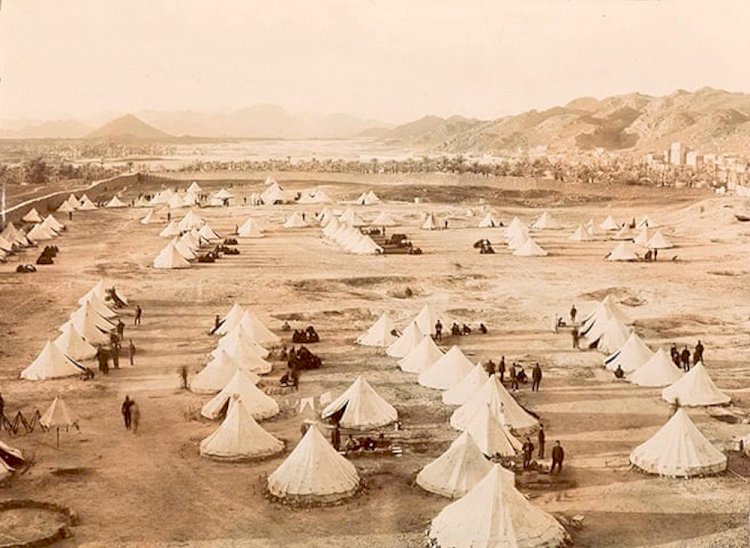
Pilgrims then flow to the plain of Mount Arafat, 12 kilometers from Mecca, to witness the major standing and fulfill the greatest pillar of Hajj. They then depart after sunset to Muzdalifah. Pilgrims return to Mina on the morning of the 10th of Dhul-Hijjah to perform the stoning of the largest Jamrah (closest to Mecca), the sacrifice, and then head to Mecca to perform the Tawaf al-Ifadah, followed by shaving or cutting the hair.
Pilgrims who performed Tamattu' Hajj and ended their Ihram from Umrah, re-enter Ihram from their places, whether inside or outside Mecca, and remain there until after sunrise on the 9th of Dhul-Hijjah. They then head to stand on Arafat (the major standing), and return to Mina after leaving Arafat and spending the night in Muzdalifah to complete the days (10, 11, 12, and 13 of Dhul-Hijjah) and perform the stoning of the three Jamrahs: the largest, the middle, and the smallest, except for those who hasten. This is according to Allah's command: "And remember Allah during the appointed days. But whoever hastens [to leave] in two days, there is no sin upon him; and whoever delays [until the third], there is no sin upon him - for him who fears Allah" (Surah Al-Baqarah, Ayah 203).
Location of Mina
The Valley of Mina is situated 7 kilometers northeast of the Grand Mosque in Mecca, between Mecca and the Muzdalifah area. It is a sacred site within the boundaries of the Haram, surrounded by mountains from the north and south.
Mina is only inhabited during the Hajj pilgrimage period. It is bordered by Jamrat al-Aqaba from the Mecca side and the Wadi Muhassar from the Muzdalifah side. It is the largest of the sacred sites in Mecca.
The area of Mina within its legal boundaries is 16.8 square kilometers, making it one of the largest sacred sites in terms of accommodating governmental and service agencies that facilitate the performance of Hajj rituals. These agencies occupy approximately 15% of the mountain slopes of the site.
The remaining area is used to set up tents to accommodate the pilgrims, covering an area estimated at 2.5 million square meters, and can house about 2.6 million pilgrims, making it the largest tent city in the world.
Status and Naming
The site of Mina holds significant historical and religious importance. It is where Prophet Ibrahim (peace be upon him) threw the stones (jamarat) and sacrificed the ram in place of his son, Ismail (peace be upon him). The Prophet Muhammad (peace and blessings be upon him) reaffirmed this act during his Farewell Pilgrimage.
Some historical accounts suggest that the name "Mina" is derived from the blood of the sacrificial animals that are slaughtered there during Hajj. Another explanation is that Prophet Adam (peace be upon him) longed for Paradise (منى means 'to wish' or 'to desire') at this place. Others believe that Mina was named because it is a place where people gather, as the Arabs refer to any gathering place as "Mina."
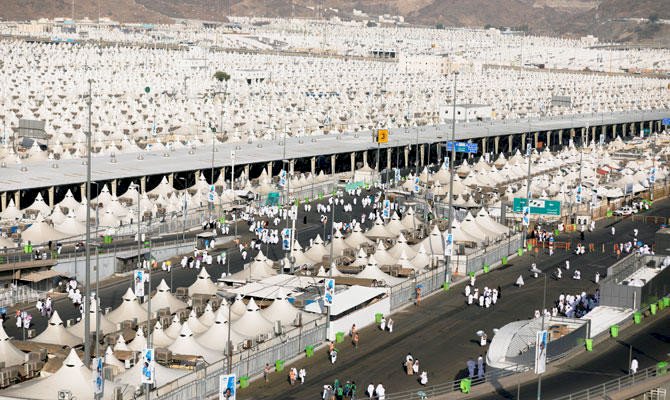
History of Mina
Among the notable historical events that took place in Mina are the First and Second Pledges of Aqabah. In the 12th year of the Prophethood, the first pledge was made to the Prophet Muhammad (peace be upon him) by 12 men from the tribes of Aws and Khazraj. The second pledge occurred in the 13th year of the Prophethood, where 73 men and two women from Medina pledged allegiance to the Prophet at the same site, which is northeast of Jamrat al-Aqaba.
In Mina, the Abbasid Caliph Abu Ja'far al-Mansur built the Mosque of the Pledge in 144 AH, located at the foot of Mount Thabir near the gorge of the Pledge of Aqabah. This was to commemorate the time when the Ansar (Helpers) pledged their support and protection to the Prophet Muhammad (peace be upon him). After this pledge, the Prophet and his companions migrated to Medina.
Additionally, the Surah Al-Mursalat was revealed in Mina. Al-Bukhari narrated from Abdullah (bin Mas'ud) (may Allah be pleased with him) that he said, "While we were with the Prophet (peace be upon him) in a cave in Mina, the Surah Al-Mursalat was revealed to him. He recited it, and I received it directly from his mouth as his mouth was moist with it."
Landmarks of Mina
Mina is renowned for its historical landmarks, including the three pillars (Jamrat) that are now part of the Jamarat Bridge complex. Another significant landmark is the Al-Khaif Mosque, named after the Arabic word "khayf," which refers to a place elevated from a watercourse. The mosque is located on the southern slope of Mina near the smaller Jamrah (Jamrat al-Sughra). It is the third largest mosque in the Mecca region after the Grand Mosque (Masjid al-Haram) and the Namira Mosque.

The Prophet Muhammad (peace be upon him) prayed in Al-Khaif Mosque. Yazid bin Al-Aswad reported, "I attended the Hajj with the Prophet (peace be upon him) and prayed the Fajr prayer with him in Al-Khaif Mosque."
This mosque carries the historical significance of being the site where the Prophet Muhammad (peace and blessings be upon him) delivered a sermon during his Farewell Pilgrimage when he was in Mina.
Known also as the Mosque of the Prophets, Al-Khaif Mosque holds a special place in Islamic tradition. It is said that the Prophet Muhammad (peace be upon him) and the prophets before him prayed there. Al-Bayhaqi narrated from Ibn Abbas that he said, "Seventy prophets prayed in Al-Khaif Mosque," among them was Prophet Musa (Moses) (peace be upon him). This rich historical legacy imbues Al-Khaif Mosque with a profound spiritual aura, making it a revered landmark for pilgrims.
The mosque still stands today and has been expanded, renovated, and restored several times due to its importance. It is also known as the Mosque of the Prophets. The mosque covers an area of 23,500 square meters, can accommodate 25,000 worshippers, has four minarets, and includes a complex with over 1,000 restrooms and 3,000 ablution faucets.
Mina also hosts the world's longest pedestrian path, starting from Mount Arafat and passing through Muzdalifah. This four-lane path is equipped with sunshade shelters, benches, and cold water fountains for the convenience of pilgrims.
Another historical site in Mina is the Mosque of the Pledge (Masjid al-Bay'ah), located about 500 meters from the largest Jamrah (Jamrat al-Aqaba). It marks the site of the first pledge in Islam. The mosque, an open-air prayer area with a mihrab and an adjoining courtyard, overlooks Mina from the northern side at the southern foot of Mount Thabir. The Mosque of the Pledge was constructed in 144 AH by the Abbasid Caliph Abu Ja'far al-Mansur at the site of the Pledge of Aqabah to commemorate the event.

Some historians mention that Mina once had a mosque known as the Mosque of the Ram, located between the first and middle Jamrahs. This mosque, which had three open arcades and five doors, has not existed for centuries.
Mina is also famous for the Zubayda Well, part of the network of canals known as the Zubayda Canal. These canals were dug by Zubayda bint Ja'far al-Mansur, wife of Caliph Harun al-Rashid, to serve pilgrims by providing housing, mosques, water reservoirs, and wells along the pilgrimage route from Baghdad to Mecca for public benefit.
One of the modern landmarks in Mina is the Jamarat Bridge, a crucial structure for the safety and convenience of pilgrims. The bridge is approximately one kilometer long and 80 meters wide, with a capacity to accommodate 300,000 pilgrims per hour. It consists of five levels and several tunnels to separate vehicle traffic from pedestrian movement. Each level is 12 meters high.
Disclaimer
The views expressed in this article are the author’s own and do not necessarily mirror Islamonweb’s editorial stance.

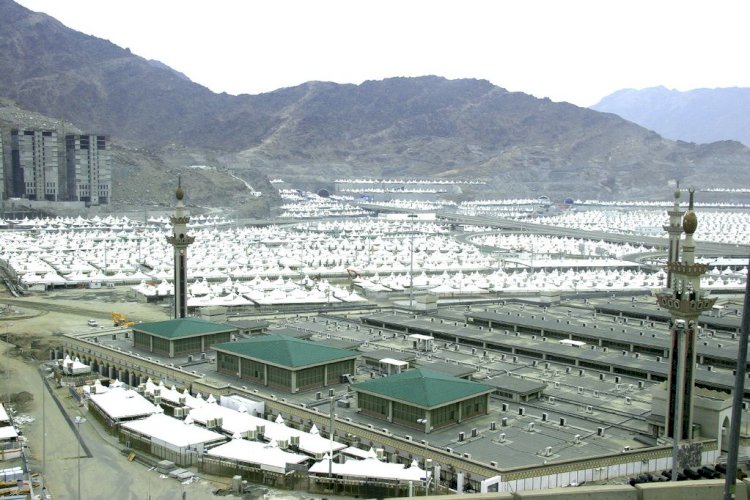



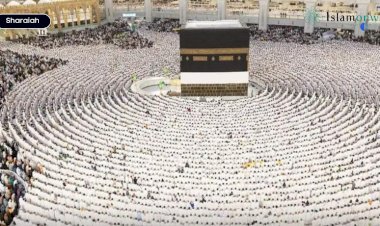
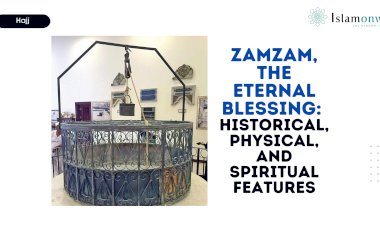

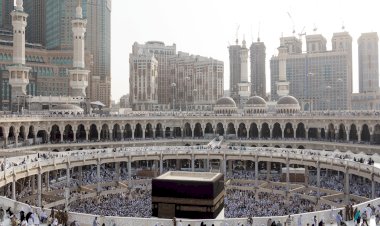














Leave A Comment